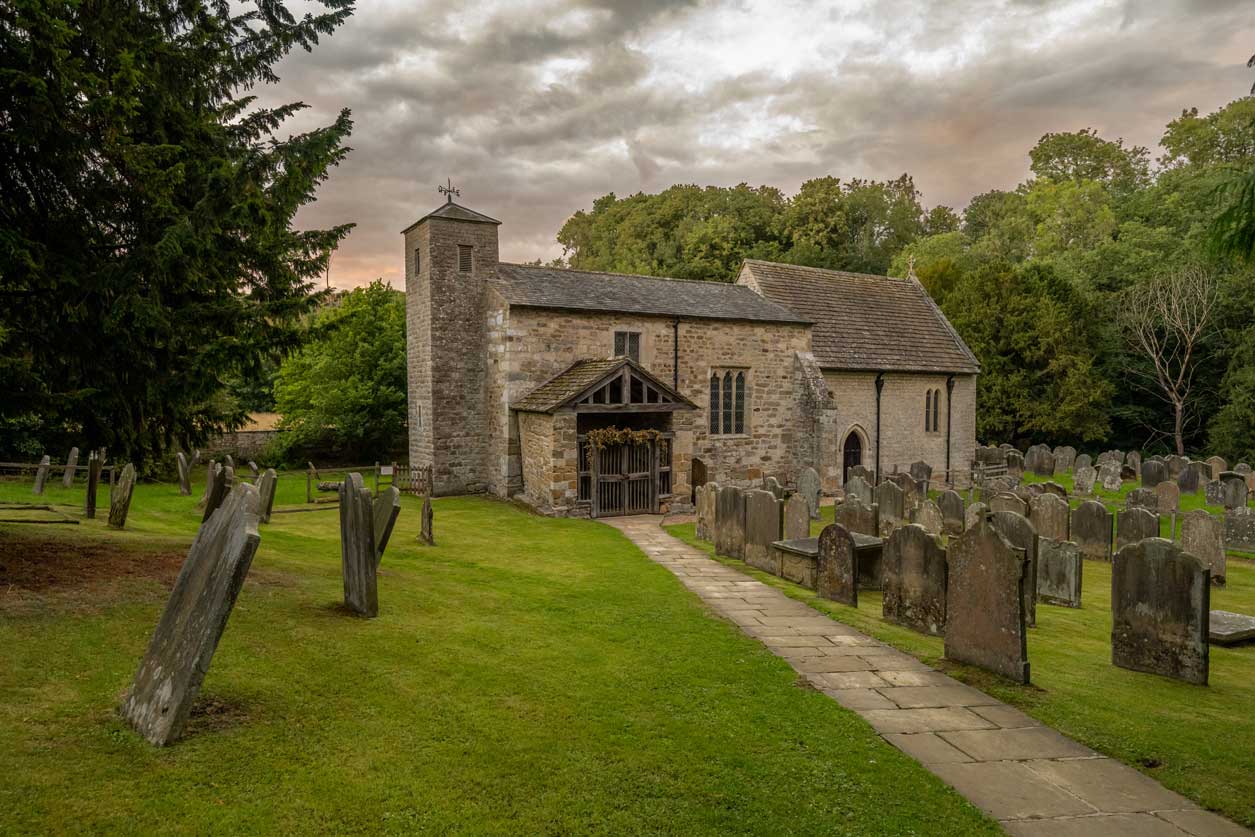After the departure of Roman forces from Britain, around 400 AD, the steady settlement of the area by Germanic immigrants helped to produce much of the pattern of villages you can see today.
Have a look at an Ordnance Survey map for the clues to the origins of the settlements in our present landscape. For example, village names ending in –ham, -ton, and –ing indicate Anglian origin or influence; those ending in –by and –thorpe are Scandinavian. Many landscape features also have names deriving from the Norse – 'rigg' instead of ridge and 'foss' for waterfall, for example. The Norse 'kirkja' means a farmstead by the church and this survives in the name Kirkbymoorside.
Christianity starts to take a hold during this period, with monasteries being founded at Whitby (AD 657), Kirkdale (Anglo-Saxon) and Lastingham (AD 659), together with a priory at Hackness (c.AD 680).
What you can see today

St Gregory's Minster at Kirkdale (pictured above) and St Mary's Church at Lastingham are of particular interest. St Gregory's has a remarkable 11th-century carved stone sundial; St Mary's, and its atmospheric Norman crypt, sits on the site of a religious settlement founded as early as 654 AD.
Carved stones can be seen at Middleton and Lythe churches.
